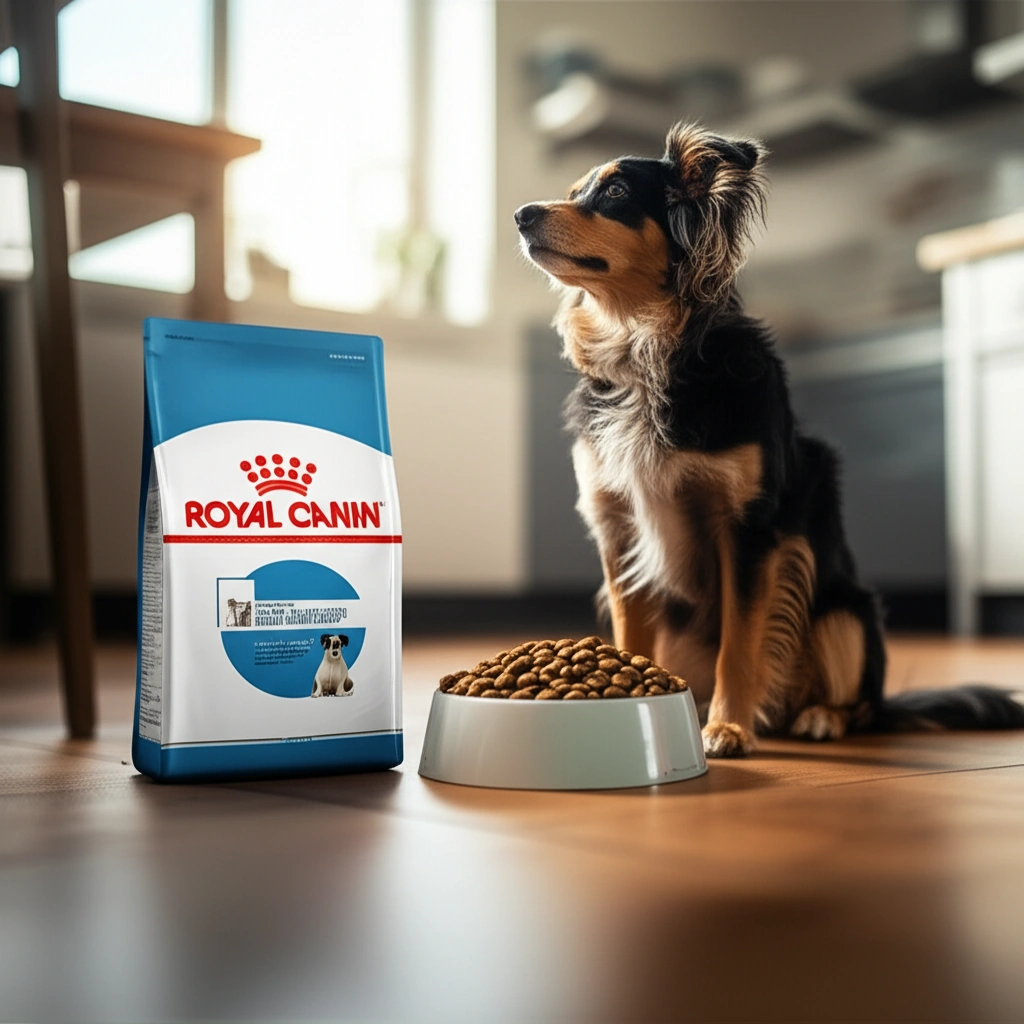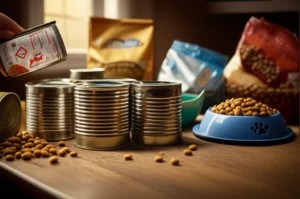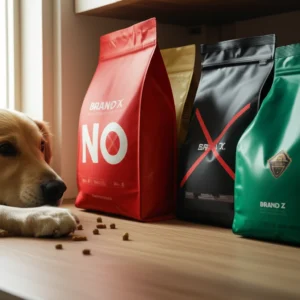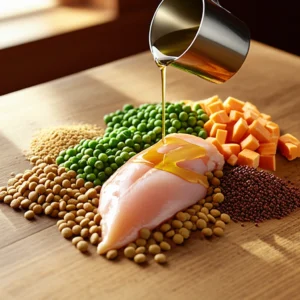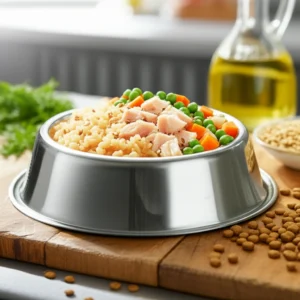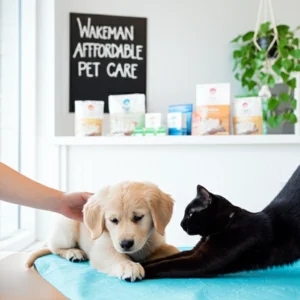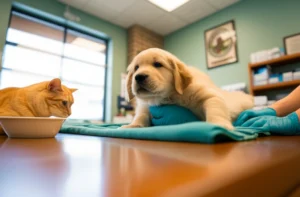First, The Real Talk
So, you’re here because your dog is family, and you want the straight scoop on Royal Canin dog food reviews—no endless preamble, no sugar-coating. You want to know if Royal Canin really lives up to the hype…and whether it’s worth that spot on your kitchen shelf (and a chunk of your pet budget).
Here’s what you need to know, right off the bat: Royal Canin is one of the most talked-about dog food brands out there—some folks swear by it, others swear at it. The truth? Well, it’s complicated, messy, and way more human than you might think.
What Makes Royal Canin Stand Out?
Royal Canin’s claim to fame is “precision nutrition.” Their shelves are stacked with formulas for everything from adult Royal Canin dog food to breed- and condition-specific blends (like renal or royal canin dog food gastrointestinal). Your vet’s probably recommended it at least once—and maybe that made you feel reassured, or maybe just…suspicious?
Let’s peel back the curtain and get into what really matters: what’s in the bowl, how much it costs, how dogs do on it, and if real owners are happy with the results.
The Good, The Bad, The Pricey
If you scroll through customer reviews (and trust me, there are hundreds), you’ll find a wild mix. Some dog parents are thrilled.
“My six-year-old Lab has eaten Royal Canin Labrador his whole life—gorgeous coat, zero stomach issues. Yes, it’s pricey, but he’s healthy and happy.”
Others? Not so much. On ConsumerAffairs, Royal Canin dog food reviews skew negative. Some folks complain about high prices, grain-heavy recipes, and a reliance on synthetic additives. The lack of a grain-free option irks many—especially if their pup has sensitivities according to ConsumerAffairs.
But here’s the thing: the people who love Royal Canin usually have specific reasons—like their vet prescribed it for a health issue, or it helped manage allergies or sensitive stomachs. In particular, specialty formulas like royal canin dog food gastrointestinal have a loyal following because, well, sometimes it just works when nothing else does.
What’s Really Inside? Ingredients Unboxed
If you’re a label-reader (and I know plenty of you are), Royal Canin’s ingredient list might raise an eyebrow or two. In their classic dry Royal Canin dog food lines, you’ll spot things like chicken by-product meal, brewers rice, wheat, corn gluten meal, beet pulp…more grains and by-products, less “whole food” than you might hope for. It’s not uncommon for their ingredient list to read like a chemistry quiz: vitamins and minerals with names you’ll never hear outside a science class according to DogsNaturallyMagazine.
But before you write it off, know this: Royal Canin leans heavily on “complete and balanced” formulas designed to meet AAFCO standards. Their nutrients are engineered to precise levels—especially in special formulas. If your dog’s a breed with very specific needs, or has medical issues, this sort of targeted nutrition can be a lifesaver.
Looking for something closer to “real food?” Royal Canin has branched into fresh lines—more like gently cooked, fewer grains, fewer additives. Their “Fresh Health Nutrition” range gets higher marks for using whole ingredients like chicken, eggs, and even yellow squash (yes, squash for your carnivore) as reviewed on DogFoodAdvisor.
Dry vs. Wet vs. Specialty: Which Bowl for Your Pup?
| Product Line | Best For | Typical Protein/Fat | Standout Ingredient/Feature | Estimated Price |
|---|---|---|---|---|
| Dry Royal Canin | Everyday, breed, age, size | 23–28%/12–14% | Chicken by-product, grains | Medium Adult, $26 (4 lbs) |
| Royal Canin Wet | Picky eaters, hydration needs | Varies | Broth, higher moisture | Varies by can |
| Fresh Health Nutrition | Whole food, fewer additives | ~26%/18% (dry matter) | Chicken, eggs, veggies | Premium/frozen, above average |
| Gastrointestinal | Digestive troubles, vet-recommended | Adjusted for digestibility | Easily absorbed ingredients | Clinic pricing, can be high |
If dry kibble is your jam, Royal Canin offers a wild array of sizes and shapes for every breed imaginable. Got a picky eater? Some of these formulations are more appealing than you’d think—though let’s be honest, some dogs just turn up their nose at everything.
Wet formulas deliver more moisture (helpful for older dogs or pups who need hydration). Some pet parents tell me it’s the only way their senior dog will eat.
And then there’s the boutique stuff—fresh-frozen and GI-sensitive lines. If you’re dealing with a dog who’s been through every bland rice-and-chicken vet trial out there, sometimes the right medical formula really is worth its weight in gold.
Is Royal Canin Worth The Price Tag?
You’re not alone if you’ve done a double-take in the checkout aisle. Looking at the Royal Canin dog food price for a big bag or a specialty formula? Let’s just say it’s not “budget brand” territory. For example: a 30-pound bag of large breed puppy dry food runs over $100, and the royal canin dog food price for special needs or prescription lines can climb fast. Yikes.
Does that mean it’s overpriced? Not always. Here’s the thing: massive research budgets, veterinary partnerships, tight quality-control standards—they all cost money. For some families (especially those managing health conditions), it’s a worthwhile investment. And you can often score discounts with autoship or bulk. But if you’ve got three dogs and a mortgage, cost is absolutely a factor.
So—try to balance value with your own priorities. For everyday use, there are comparable brands with simpler ingredient lists and smaller price tags. But when your vet insists only Royal Canin will do for your pup’s digestive troubles or allergies, listen up.
If You’re Wondering About Results…
Here’s where things get real. Forget what the marketers say—what matters is how dogs feel. In online reviews and pet forums, some folks share heartwarming stories: their dog’s fur gets shiny, chronic vomiting vanishes, or their senior dog starts zooming again thanks to GI or breed-specific formulas as seen on Reddit.
But, there are just as many who see little difference, or even run into food sensitivities and picky appetites. You’ll catch people switching back to more “natural” or “limited-ingredient” diets. And more than a few grumble about what’s missing—like fruit or vegetables in most formulas, or the lack of a proper grain-free version for allergy-prone pups.
Long story short: your mileage may vary. If Royal Canin fixes the problem your dog had—stick with it. If you’re not seeing results, or your dog just won’t touch it, don’t be afraid to try something else.
Real Life Stories From Real Dog Parents
Let’s pause on theory and get to reality.
I once chatted with a woman named Beth whose Lab has been on Royal Canin’s breed-specific kibble since puppyhood. Beth told me, “His coat looks like silk, the vet compliments him every checkup… pricey, yeah, but worth every penny.”
On the flip side, Matt—a proud dad to two rescue mutts—swapped off Royal Canin after months of skin problems and soft stools. He switched to a fresh whole-food diet (yes, he cooks for his dogs now). Their bellies cleared up, but now there’s a lot more meal prep on his schedule. Point is: both these stories are true, and both could happen to you.
How To Read That Label Like a Pro
Don’t let fancy dog-food jargon throw you. What should you check for on Royal Canin’s label?
- First five ingredients: If you see corn, chicken by-product, and brewers rice, now you know these are common in traditional lines.
- Guaranteed Analysis: Protein and fat levels—compare them to what your breed/age should have. For instance, adult royal canin dog food often runs about 23% protein, 12% fat.
- AAFCO Statement: Look for “complete and balanced”—that means the formula meets commercial pet food standards.
- Additives: Lots of long-named vitamins and minerals? Not always scary—could be about getting the balance just right. But minimal, food-based sources are generally better.
Confused? Don’t be shy: your vet (or even more-experienced dog friends) can help you decode labels, too.
When Is Royal Canin The Right Choice?
If your dog’s battling a real health challenge, needs breed-specific support, or your adult royal canin dog food needs to support active, aging muscles? Royal Canin’s specialty blends are truly remarkable. The same goes for prescribed blends like royal canin dog food gastrointestinal—when your vet picks it, there’s a reason.
If you’re after a diet chock full of whole foods, low in grains, and minimal on “extras”? Royal Canin might not fit what you’re looking for—unless you grab their Fresh or wet lines, like royal canin dog food wet.
What Now? How You Can Decide…
Choosing a dog food is almost as personal as picking your own meals. You want your dog to live a long, happy, healthy life—and that means sometimes you’ll have to balance price, convenience, and health outcomes.
Are you dealing with a medical issue? Trust your vet. Is your dog a healthy mutt with a cast-iron belly? You’ve got more options than ever—including Royal Canin’s own huge range. Love the idea of a formula tailored for your breed, age, or quirks? There’s probably a Royal Canin bag for that.
And if after all this, you still feel uncertain—know that you’re not alone. Share your experiences with others, trade tips and stories, and if you ever wonder which way to go, ask. Because believe me, every dog (and every owner) is different… and that’s what makes this journey, messy as it is, completely worth it.
Conclusion
Look, here’s the bottom line on Royal Canin dog food reviews: It’s a brand built on science, research, and decades of veterinary trust. For some pups—especially those facing health challenges—it can change lives. Other times, it’s just not the right fit, especially if you want a simpler, more whole-food diet.
Whichever road you travel, remember: it’s okay to question, to experiment, and to change your mind. Listen to your dog, your vet, and yes, to yourself. If you’ve learned a little, or found a new angle on what’s really feeding your fur baby—mission accomplished. If you have experiences with Royal Canin, or you’re still on the fence, keep learning, keep sharing, and don’t forget—a happy, healthy pup is the goal. You’ve got this.

